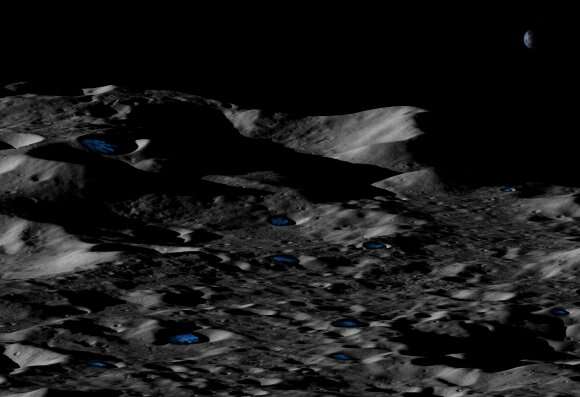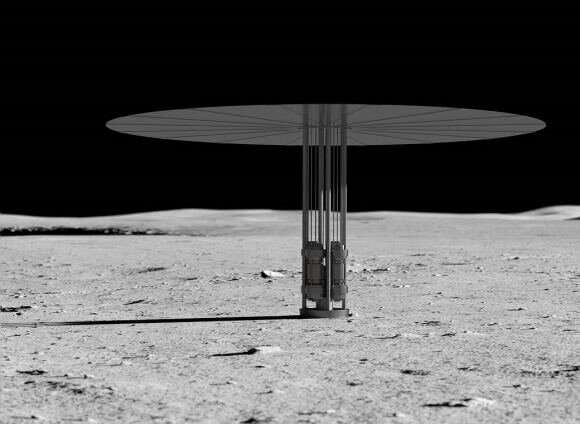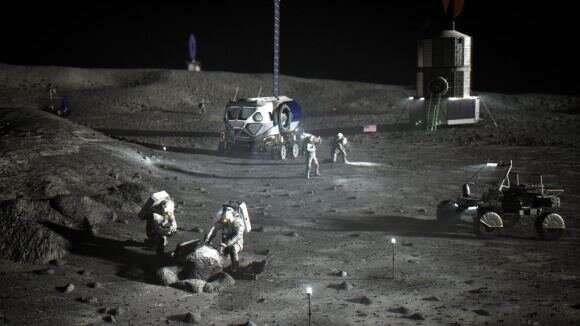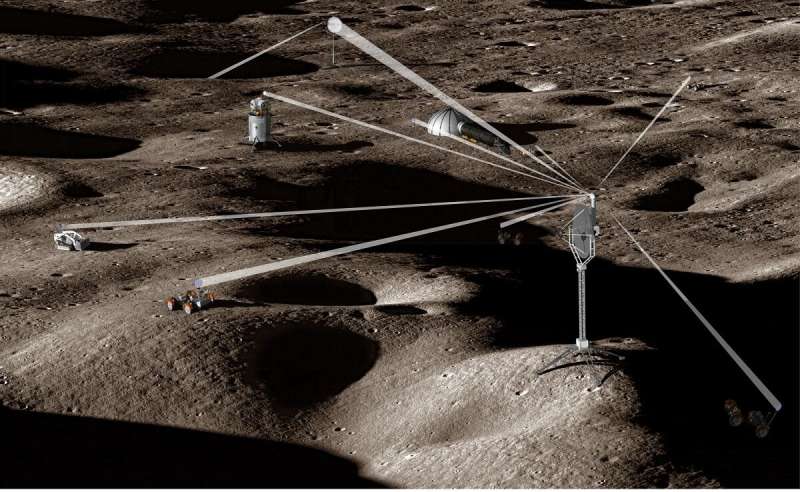In this case, the Light Bender proposal addresses the needs of astronauts who will be part of the Artemis missions and the "long-term human lunar surface presence" that will follow. The design for Taylor's concept was inspired by the heliostat, a device that adjusts to compensate for the Sun's apparent motion in the sky so that it keeps reflecting sunlight towards a target.

In the case of the Light Bender, Cassegrain telescope optics are utilized to capture, concentrate, and focus sunlight while a Fresnel lens is used to align light beams for distribution to multiple sources located at distances of 1 km (0.62 mi) or more. This light is then received by photovoltaic arrays measuring 2 to 4 m (~6.5 to 13 ft) in diameter that convert the sunlight into electricity.
In addition to habitats, the Light Bender is capable of providing power to cryo-cooling units and mobile assets like rovers. This kind of array could also play an important role in the creation of vital infrastructure by providing power to in-situ resource utilization (ISRU) elements, such as vehicles harvest local regolith for use in 3D printer modules to build surface structures. As Taylor described in his NIAC Phase I proposal statement:
"This concept is superior to alternatives such as highly inefficient laser power beaming, as it only converts light to electricity once, and to traditional power distribution architectures that rely on mass intensive cables. The value proposition of Light Bender is an ~5x mass reduction in mass over traditional technological solutions such as laser power beaming or a distribution network predicated on high voltage power cables."
But perhaps the biggest draw to such a system is the way it can distribute power systems to permanently shaded craters of the moon's surface, which are common in the moon's southern polar region. In the coming years, multiple space agencies—including NASA, ESA, Roscomos, and the China National Space Agency (CNSA) – hope to establish long-term habitats in the area because of the presence of water ice and other resources.

The level of power the system provides is also comparable to the Kilopower concept, a proposed nuclear fission power system designed to enable long-duration stays on the moon and other bodies. This system will reportedly provide a power capacity of 10 Kilowatt-electric (kWe) – the equivalent of one thousand watts of electric capacity.
"In the initial design, the primary mirror captures the equivalent of almost 48 kWe of sunlight," writes Taylor. "End user electrical power is dependent on the distance from the primary collection point, but back of the envelope analyses suggest that at least 9kWe of continuous power will be available within 1 km."
On top of all that, Taylor emphasizes that the total amount of power the system can generate is scalable. Basically, it can be increased by simply changing the size of the primary collection element, the size of the receiver elements, the distance between nodes, or by just increasing the total number of sunlight collectors on the surface. As time goes on and more infrastructure is added to a region, the system can be scaled to adapt.
As with all proposals that were selected for Phase I of the 2021 NIAC program, Taylor's concept will receive a NASA grant for up to $125,000. All Phase I Fellows are now in an initial nine-month feasibility study period, where the designers will evaluate various aspects of their designs and address foreseeable problems that could impact the operations on the concepts once they are operating in the South Pole-Aitken Basin.

In particular, Taylor will focus on how the optical lens could be improved based different designs, materials, and coatings that would result in acceptable levels of light propagation. He will also be assessing how the lens could be designed in such a way that it can deploy autonomously once it reaches the lunar surface. Possible methods for autonomous deployment will be the subject of subsequent studies.
Following the design/feasibility study, an evaluation of architectural alternatives for Light Bender will be performed in the context of a lunar base located near the moon's south pole during sustained lunar surface operations. The primary figure of merit will be the minimization of landed mass. Comparisons will be made to known power distribution technologies such as cables and laser power beaming.
After these feasibility studies are complete, the Light Bender and other Phase I Fellows will be able to apply for Phase II awards. Said Jenn Gustetic, the director of early-stage innovations and partnerships within NASA's Space Technology Mission Directorate (STMD):
"NIAC Fellows are known to dream big, proposing technologies that may appear to border science fiction and are unlike research being funded by other agency programs. We don't expect them all to come to fruition but recognize that providing a small amount of seed-funding for early research could benefit NASA greatly in the long run."



